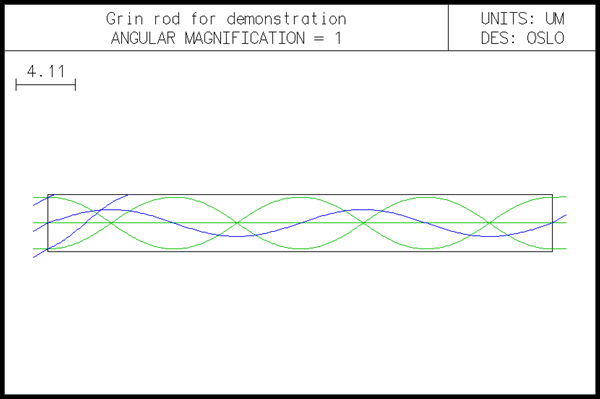Grinrod is an example system designed using a hypothetical gradient material. It shows the way in which rays would propagate through a gradient-index light pipe. You should note that this example is carried out using strictly geometrical optics, and can only be applied to propagation through fibers when the fiber diameter is much larger than the single-mode spot size. As noted before, gradient index technology is used in many diverse applications. The system in this example is a gradient index rod that is more like a fiber than a lens. It is, however, an imaginary system, designed using OSLO without regard for actual refractive indices that can be manufactured.

The drawing above shows both on-axis and off axis beams. Note that the off-axis beam for both the upper and lower rim rays is truncated by the edge of the rod. In order for this to happen, you must turn on the Aperture check all GRIN segs general operating condition. If you don’t, the rays will be free to propagate outside the boundary defined by the aperture on the surface for with the GRIN material is defined.
*OPERATING CONDITIONS: GENERAL
| Image surface: |
3 |
Aperture stop: |
1 |
| Evaluation mode: |
Afocal |
Reference surface: |
1 |
| Aper check all GRIN ray segs: |
On |
Extended-aper ray aiming mode: |
Off |
| Plot ray-intercepts as H-tan U: |
Off |
XARM beam angle: |
90.000000 |
| Source astigmatic dist: |
-- |
Ray aiming mode: |
Aplanatic |
| Temperature: |
20.000000 |
Pressure: |
1.000000 |